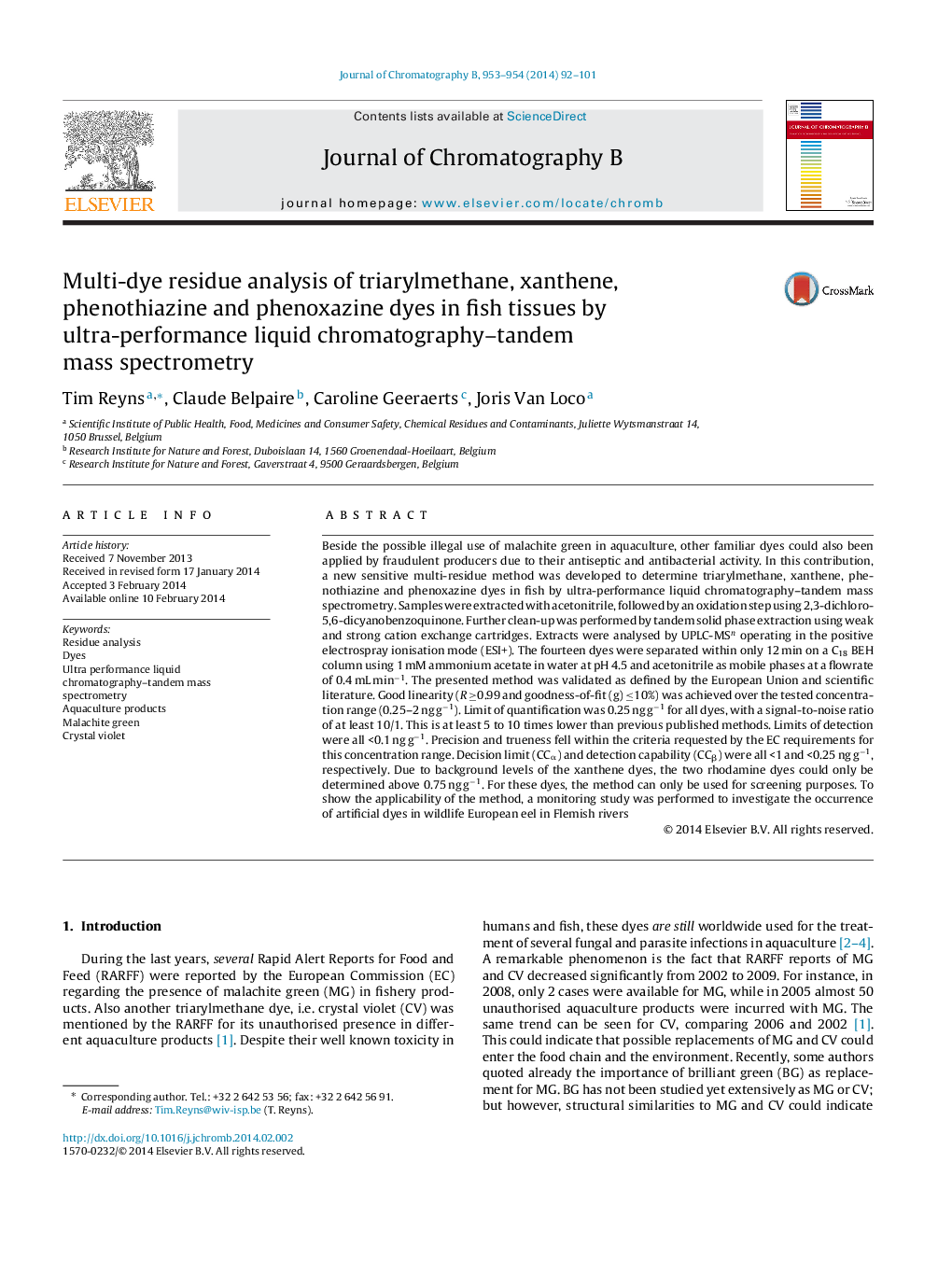| کد مقاله | کد نشریه | سال انتشار | مقاله انگلیسی | نسخه تمام متن |
|---|---|---|---|---|
| 1216218 | 1494088 | 2014 | 10 صفحه PDF | دانلود رایگان |
• A new UPLC–MS/MS method was developed for the quantification of illegal dyes in fish tissues.
• Due to the presence of strong positively charged sulphur groups, attention was paid to the solid phase elution step.
• The validation was performed according to standards of European Union (Directive 2002/657/EC) and scientific literature.
• The method was able to quantify at 0.25 ng g−1.
• Applicability of the method was shown in a subsequent monitoring study of wildlife eel in Flemish rivers.
Beside the possible illegal use of malachite green in aquaculture, other familiar dyes could also been applied by fraudulent producers due to their antiseptic and antibacterial activity. In this contribution, a new sensitive multi-residue method was developed to determine triarylmethane, xanthene, phenothiazine and phenoxazine dyes in fish by ultra-performance liquid chromatography–tandem mass spectrometry. Samples were extracted with acetonitrile, followed by an oxidation step using 2,3-dichloro-5,6-dicyanobenzoquinone. Further clean-up was performed by tandem solid phase extraction using weak and strong cation exchange cartridges. Extracts were analysed by UPLC-MSn operating in the positive electrospray ionisation mode (ESI+). The fourteen dyes were separated within only 12 min on a C18 BEH column using 1 mM ammonium acetate in water at pH 4.5 and acetonitrile as mobile phases at a flowrate of 0.4 mL min−1. The presented method was validated as defined by the European Union and scientific literature. Good linearity (R ≥0.99 and goodness-of-fit (g) ≤10%) was achieved over the tested concentration range (0.25–2 ng g−1). Limit of quantification was 0.25 ng g−1 for all dyes, with a signal-to-noise ratio of at least 10/1. This is at least 5 to 10 times lower than previous published methods. Limits of detection were all <0.1 ng g−1. Precision and trueness fell within the criteria requested by the EC requirements for this concentration range. Decision limit (CCα) and detection capability (CCβ) were all <1 and <0.25 ng g−1, respectively. Due to background levels of the xanthene dyes, the two rhodamine dyes could only be determined above 0.75 ng g−1. For these dyes, the method can only be used for screening purposes. To show the applicability of the method, a monitoring study was performed to investigate the occurrence of artificial dyes in wildlife European eel in Flemish rivers
Journal: Journal of Chromatography B - Volumes 953–954, 15 March 2014, Pages 92–101
